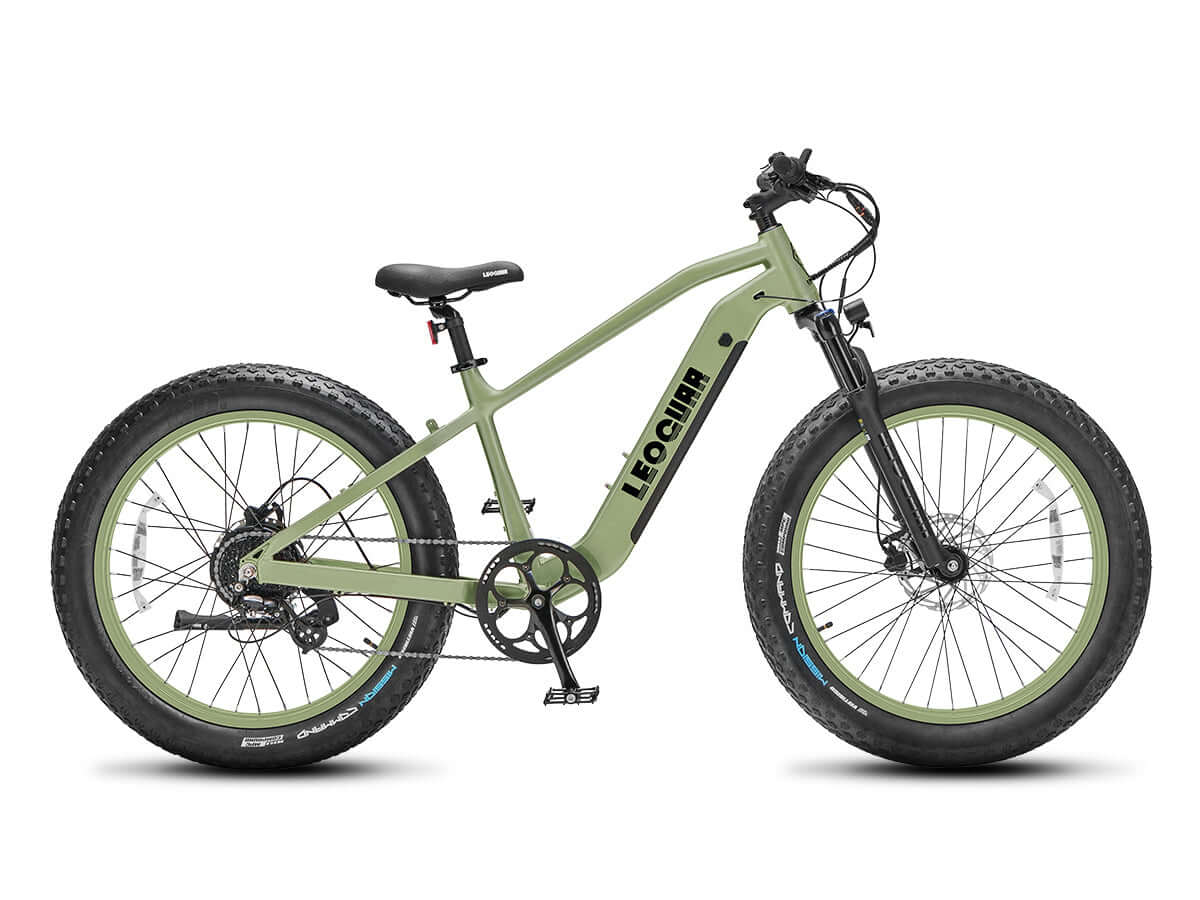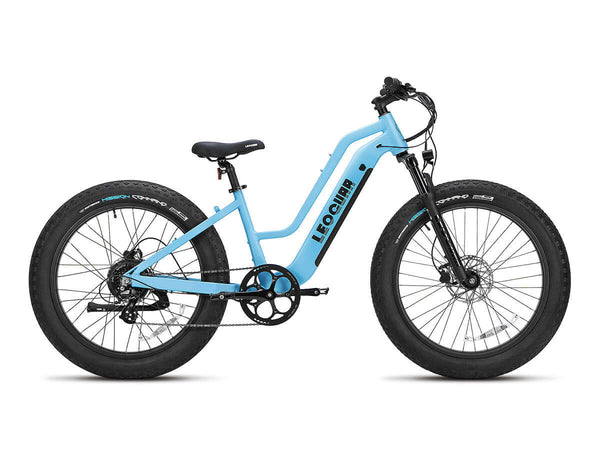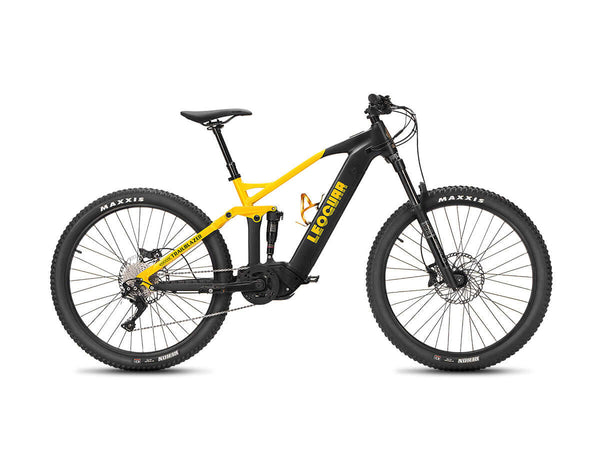
Mountain Bike Starter Guide: Recommended Models & E-Bike Brands to Know
Welcome to mountain biking! Picking your first bike can feel overwhelming with so many choices and technical terms. It's a big purchase, and you want to make the right choice. For most beginners, we recommend starting with a quality hardtail mountain bike with modern geometry that costs between $800 and $1,800. This type of bike gives you the best mix of performance, strength, and value. It will set you up for success on the trails.
This guide will explain why we recommend this type of bike and show you some of the best recommended mountain bikes for beginners. We'll also look at electric mountain bikes to help you decide if that might be a better choice for you. By the end, you'll know everything you need to make a smart purchase and start riding.
Understanding Bike Types
Before you pick a specific bike, you need to make three key decisions. These are the type of bike, your budget, and the important parts. Getting these choices right matters more than brand names or colors. Let's break down each decision so you can choose wisely.
Hardtail vs. Full Suspension
This is your first and biggest choice. A hardtail has suspension only in the front fork, with a solid rear end. A full-suspension ebike has suspension in both the front and back. For beginners, these two types differ greatly in price, upkeep, and how they feel to ride.
| Feature | Hardtail | Full Suspension |
|---|---|---|
| Price | More affordable | More expensive |
| Maintenance | Simpler, less to maintain | More complex, more pivots/shocks to service |
| Efficiency | Better on climbs and smooth trails | Better traction and comfort on rough terrain |
| Skill Development | Teaches better line choice | More forgiving of mistakes |
| Best For | Beginners, smoother trails, budget-conscious riders | Rougher/technical trails, riders prioritizing comfort |
Our advice for beginners is to start with a hardtail. It costs less, needs less maintenance, and helps you learn basic skills like picking good lines on the trail. These skills will make you a better rider over time. You'll also save money that you can spend on other gear or future upgrades.
Setting Your Budget
Your budget decides how good and long-lasting your bike parts will be. We strongly suggest avoiding bikes from big box stores that cost under $500 for real trail riding. These bikes often use weird parts, weigh too much, and can be dangerous on rough trails. Here are the budget ranges that make sense for mountain biking.
- The Solid Entry-Point ($600 - $1,000): This is where you find your first real trail bikes. They have reliable parts from good brands and can handle actual singletrack trails.
- The Sweet Spot ($1,000 - $1,800): This range gives you the best value for your money. Bikes here often include major upgrades like better air suspension forks, dropper posts that let you lower your seat with a button, and gear systems with more range.
- The Premium Beginner ($1,800+): In this price range, you'll find high-performance hardtails with excellent parts or entry-level full-suspension bikes. These bikes will grow with your skills for years to come.
Key Components
Don't get lost reading all the technical details. For beginners, only a few parts really matter when choosing a bike.
- Hydraulic Disc Brakes: These give you much better stopping power and control than cable-operated or rim brakes. They work especially well in wet or dusty conditions, making them a critical safety feature.
- A Modern 1x Drivetrain: This means the bike has one chainring in front and multiple gears in back. It's simpler, lighter, and more reliable than older systems with two or three chainrings up front.
- Modern Trail Geometry: You might hear terms like "slack" and "long" when people talk about bike geometry. In simple terms, modern trail ebike geometry means the bike stays stable at speed and on downhills, giving you more confidence when the trail gets steep.
Our Top Bike Picks
We've chosen several great bikes that work well for new riders. Instead of just listing specifications, we've matched our recommendations to common beginner rider types. Find the description that sounds most like you and your riding goals. Each bike excels in different areas to match different needs.
Leoguar Fastron Series
- Rider Profile: The Confident Cruiser & Adventure Seeker. You want a fat tire ebike that doesn't just handle rugged terrain—it owns it. Whether you're commuting through city streets or chasing weekend dirt trails, you need a ride that blends off-road strength with day-to-day comfort. Stability, power, and style matter to you. So does frame geometry that fits your lifestyle.
- Key Features: The Leoguar Fastron series is built around a 750W high-torque motor, a massive 720Wh battery, and fat 26"x4.0" tires that eat up sand, snow, and gravel. With 8-speed gearing, Tekro hydraulic disc brakes, and an intelligent cadence sensor, it offers both safety and versatility. Riders can choose between SO (Step-Over) and ST (Step-Through) frame options.
- Our Take: The Leoguar Fastron stands out in the starter fat-tire ebike category. Its dual-frame offering respects different rider needs, making it beginner-friendly without being boring. Between the power-packed specs, high payload capacity (up to 300 lbs), and thoughtful design details, this bike proves that starting strong doesn’t have to mean compromising on features or style. A solid pick for first-time ebike buyers who want more than “just a commuter.”
Trek Marlin Series
- Rider Profile: The Versatile Explorer. You want a bike that handles local singletrack trails but also works for bike paths, gravel roads, or getting around town. Versatility is your main priority.
- Key Features: The Marlin series benefits from Trek's huge dealer network, making service and support easy to find anywhere. It has balanced, neutral geometry that feels comfortable for many types of riding. Later models in the series often include features that make them more trail-ready as your skills improve.
- Our Take: The Trek Marlin is one of the most popular and frequently recommended mountain bikes for beginners. It's a reliable, safe choice from a major brand that does everything well and won't let you down.
Specialized Rockhopper or Fuse
- Rider Profile: The Aspiring Trail Rider. You've caught the mountain biking bug and plan to spend most of your time on singletrack trails. You want a bike that won't hold you back as your skills improve and you start riding more challenging terrain.
- Key Features: Specialized bikes, especially the Fuse, often have more aggressive, trail-focused geometry. This means they stay stable and capable on steeper, rougher terrain. They have a reputation for high-quality frames that are worth upgrading over time.
- Our Take: This is a bike you can truly grow with as your skills develop. The Rockhopper is a fantastic starting point, while the Fuse is a step up in capability that builds huge confidence on the trails.
Giant Talon Series
- Rider Profile: The Budget-Conscious Adventurer. You want the absolute best performance and part quality for your money. Your decision focuses on getting the maximum value for every dollar you spend.
- Key Features: Giant is the world's largest bike manufacturer, and their size lets them offer incredible value. At any price point, a Giant Talon will often have a better fork, brakes, or gear system than its direct competitors.
- Our Take: If your main goal is getting the best specifications for your budget, Giant is almost always a top choice.
Their frames are excellent, and the value is hard to beat. Based on extensive testing of budget-friendly bikes, Giant consistently ranks at or near the top for part value.
Considering an E-Bike?
Electric mountain bikes are no longer a specialty product. They're a huge part of the sport now. But are they a good choice for a beginner? The answer depends on your specific situation and goals. First, let's be clear about one thing: it's not cheating, it's assistance. An e-mountain bike motor only provides power when you are pedaling, amplifying your effort to let you go farther, faster, or tackle climbs that would otherwise be impossible.
Why Choose an E-Bike?
For a beginner, an e-mountain bike can be a game-changer in several key situations. Here are the main reasons people choose electric assistance for their first mountain bike.
- Fitness and Pacing: You want to ride with a fitter, faster group of friends without being left behind or holding them up.
- Time Constraints: You have limited time to ride and want to pack in more trail miles and more downhill runs in a single session.
- Physical Limitations: An injury, health condition, or age makes traditional mountain biking's tough climbs a barrier to getting started.
- Maximizing Fun: For many riders, the fun part is the downhill sections.
An e-bike turns the climbs from hard work into a pleasant spin, letting you save your energy for the descents.
Top E-Bike Brands
If you're considering an e-mountain bike, buy from a reputable brand with a proven motor system and good dealer support. Motor systems from Bosch, Shimano, and Specialized are industry leaders with the best reliability and service networks.
Specialized Turbo Series: Specialized was a pioneer in lightweight e-mountain bikes with their Levo SL models, which offer a more natural ride feel. Their full-power Levo and Kenevo models are benchmarks for performance in the recommended mountain e bike brands category.
Trek Rail and Fuel EXe: Trek offers both full-power and lightweight options that are praised for their excellent suspension and handling. They closely mimic the feel of their non-electric counterparts, making the transition easier.
Giant Trance E+ and Stance E+: True to form, Giant offers some of the best-value e-mountain bikes on the market. They often provide top-tier Bosch or Yamaha motors on bikes that cost less than the competition.
Value-Oriented Brands: Brands like Aventon are making waves with models like the Ramblas, which offers a trail-worthy hardtail e-mountain bike with a quality motor system at a very competitive price. These direct-to-consumer brands are great options if you're comfortable with minor assembly.
Leoguar Fastron Series: Leoguar is a rising brand specializing in rugged, commuter-ready fat tire ebikes. Originally an OEM for well-known electric bike companies, we’ve since launched our own lineup built on years of manufacturing expertise. Our Fastron series offers powerful 750W motors, durable frames, and thoughtful features like anti-theft LCDs and Canbus systems—all at competitive prices. With both step-over and step-through models, we focus on making high-performance e-mountain bikes accessible to more riders.
Essential Biking Gear
Your bike is the biggest purchase, but it's not the only thing you need. Plan to spend an extra $150-$300 on essential safety gear. Don't leave the bike shop without these items.
- A Quality Helmet: This is absolutely required for safe riding. Modern trail helmets offer more coverage on the back and sides of your head than road or commuter helmets. Look for models with MIPS or similar rotational-impact protection technology.
- Gloves: Full-fingered gloves provide better grip on your handlebars and protect your hands from blisters. Most importantly, they save your palms from getting torn up in a crash.
- Padded Shorts: You don't need the full spandex outfit, but padded liner shorts worn under baggy trail shorts make a huge difference in comfort. This is especially true on rides longer than 30 minutes.
- Basic Tools: At minimum, carry a spare tube, a mini-pump, and a multi-tool with a chain breaker. Learning how to fix a flat tire on the trail is an important skill every mountain biker needs.
What You Can Wait On
It's easy to get carried away buying gear when you're excited about a new hobby. These items are nice to have, but you don't need them on your first ride.
- Clipless Pedals and Shoes: Starting with good flat pedals and skate-style shoes is the best way to learn proper technique and balance.
- Bike-Specific Jerseys: Any moisture-wicking athletic shirt will work just fine for your first several rides.
- Hydration Packs: For shorter rides under two hours, a simple water bottle and cage on your bike are sufficient.

Your Next Steps
Choosing your first mountain bike is the start of an amazing journey into one of the most fun outdoor sports. Let's recap the key points to remember when making your decision. Focus on a quality hardtail in the $800-$1,800 range for the best blend of value and performance. Make key features like hydraulic disc brakes and a 1x drivetrain your priority over brand names or fancy colors.
Be honest about your fitness level and goals to decide if an e-mountain bike might be a better fit for your situation. Always budget for essential safety gear, especially a good helmet that fits properly.
The most important step after buying your bike is to get out and ride regularly. Find your local trails, connect with other riders, and don't be afraid to ask questions when you need help. The mountain bike community is welcoming and supportive. As you'll see in guides from sources like Flow Mountain Bike, everyone is excited to share their passion for the sport. Welcome to the club, and we'll see you on the trail!
Frequently Asked Questions
1. What's the difference between a hardtail and full suspension mountain bike for beginners?
A hardtail has suspension only in the front fork, while full suspension has it front and rear. Hardtails are more affordable, require less maintenance, and help beginners learn better riding technique. Full suspension bikes are more expensive but offer more comfort on rough terrain.
2. How much should I spend on my first mountain bike?
For a quality beginner mountain bike, plan to spend $800-$1,800. Avoid bikes under $600 from department stores as they often have poor components and can be unsafe. The $1,000-$1,800 range offers the best value with significant upgrades like better suspension and dropper posts.
3. Do I need an electric mountain bike as a beginner?
Electric mountain bikes can be great for beginners in specific situations, such as riding with fitter friends, having limited time, or dealing with physical limitations. However, a traditional mountain bike is usually the better choice for learning fundamental skills and costs significantly less.
4. What safety gear do I absolutely need for mountain biking?
Essential safety gear includes a quality helmet with MIPS technology, full-fingered gloves, padded shorts, and basic tools (spare tube, mini-pump, multi-tool). Budget an extra $150-$300 for these items. A properly fitting helmet is the most critical piece of safety equipment.
5. What bike features should I prioritize as a beginner?
Focus on hydraulic disc brakes for superior stopping power, a modern 1x drivetrain for simplicity and reliability, and modern trail geometry for stability. These features matter more than brand names and will significantly impact your riding experience and safety on the trails.











































Leave a comment